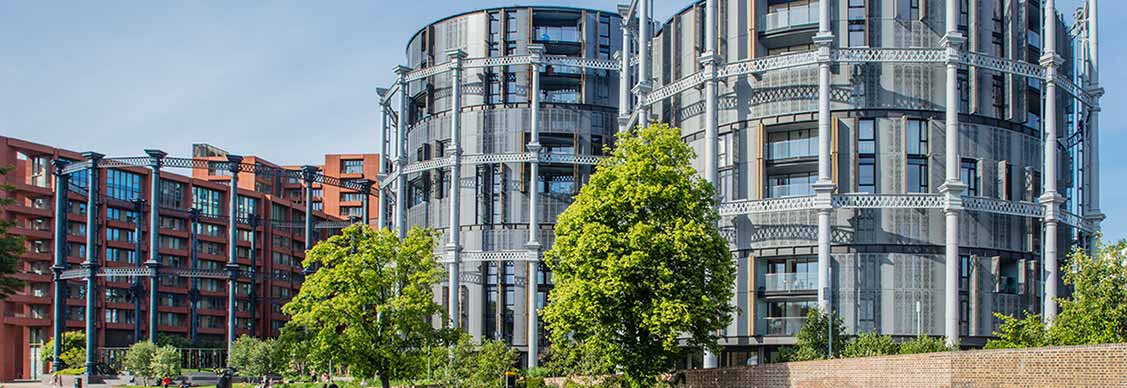How urban transformation will be different in the 2020s
Social impact and decarbonisation strategies will be the pillars of urban development projects in the coming years
From revamping disused docklands to rejuvenating rundown neighbourhoods, cities are embarking on urban development projects that put health and sustainability at the heart of placemaking.
These mixed-use schemes increasingly focus on implementing features that support wellbeing, champion strong environmental credentials, build communities and promote equality and inclusion.
The redevelopment of the western edge of Dublin city centre aims to bring the concept of the 15-minute city to life while Rotterdam’s M4H project will re-green the site surrounding a manufacturing hub, and add sport facilities, housing, hospitality and cultural space.
Such schemes show how thinking around what makes a successful city is shifting, says Jeremy Kelly, Lead Director, Global Cities Research at JLL.
“City governments are looking beyond traditional metrics like GDP and employment growth and are refocusing on harder-to-measure factors relating to liveability, opportunity and experience,” he explains.
“That has implications for real estate because city governments now expect the industry to deliver developments that have a positive social impact.”
Looking beyond the money
Many of today’s schemes draw from major urban projects of the previous decade - such as Hudson Yards in New York City and London’s King’s Cross.
“These were substantial projects that changed the spatial logic of a city, opening up new areas that were increasingly mixed-use, and cutting-edge when it came to responding to the demands of occupiers and well-off residents,” says Kelly.
One big difference is that urban transformation projects of the 2020s will positively impact surrounding communities, in part by addressing challenges to provide affordable housing.
“That’s where the shift is – thinking about the community impact,” says Kelly. “And for developments to boost or retain their value, they’ll need to be part of neighbourhoods that are also regenerating.”
Health is another key focus for today’s projects, tying into trends such wellness in the workplace and more active lifestyles.
Outdoor access, natural light and green areas – long shown to boost mental health – will be critical features for projects, along with easy access to leisure and healthcare amenities.
“Health and wellbeing concepts are foundational to today’s developments, whatever the size of the project,” says Walid Goudiard, Head of Project and Development Services at JLL. “It’s a matter of placemaking and curating the built environment to provide a healthy, positive experience whether in an office or residential setting.”
The McEwan in Edinburgh, for example, is the first European residential scheme to receive a Fitwel 3-start rating for its focus on health and wellbeing through landscaped gardens and neighbourhood amenities.
And there will be more to come. “The pandemic has accelerated that transition toward creating more human and sustainable places,” says Richa Walia, Director, Work Dynamics Research at JLL. “There’s a genuine desire among companies to act responsibly and their first priority is to create human-centric places.”
Sustainability for social good
Environmental concerns will equally guide urban development, as municipalities develop plans to hit net zero targets and more real estate companies report their environmental impact in line with globally recognised standards.
In Paris, the recently completed regeneration of Clichy-Batignolles is designed as an eco-quarter with low-energy building powered from geothermal and solar sources.
Biodiversity, too, will become a key pillar for transformation projects, with city authorities more likely to greenlight schemes with features such as green roofs, areas given over to rewilding and living walls. Many municipalities now restrict the construction practice of soil sealing to improve carbon capture in buildings and boost biodiversity.
What’s more, plans will need to consider retrofitting and repurposing existing buildings instead of embarking on carbon-intensive new builds. Here, technology and digitisation can offer two vital benefits in optimising resources, says Goudiard.
“Firstly, sensor-enabled smart buildings can automate operations for improved efficiency and reduced emissions,” he explains. “Digitising spaces also helps with tracking how they’re used and then getting the maximum value from them – especially in dense city centres. The concern is how to embed tech solutions in a way that really benefits users.”
Technology could also boost inclusiveness in urban developments through data analytics that align space design with users’ needs – such as enhancing play areas or accessible walkways – or digital services that offer more equitable access to housing and infrastructure. However, with less defined metrics to track than decarbonisation initiatives, inclusion can be a design challenge in many projects.
“There is a lot of work to be done when it comes to creating inclusive spaces,” says Walia. “The elements that make up diversity and inclusion need to be addressed holistically. Companies are trying to understand how a development can truly create social impact.”
Governance is also moving with the times. Whole of place governance, where authorities collaborate closely with the users of a space, will be the critical difference in urban transformation projects of the coming years.
City planning in Paris, for example, now calls for developers to run consultations where local communities provide feedback to design teams and investors on major projects, helping to improve inclusiveness.
“It’s a more holistic view that’s not just based on the economic output of that district,” says Kelly. “It’s about value creation and improving quality of life for the whole neighbourhood.”
